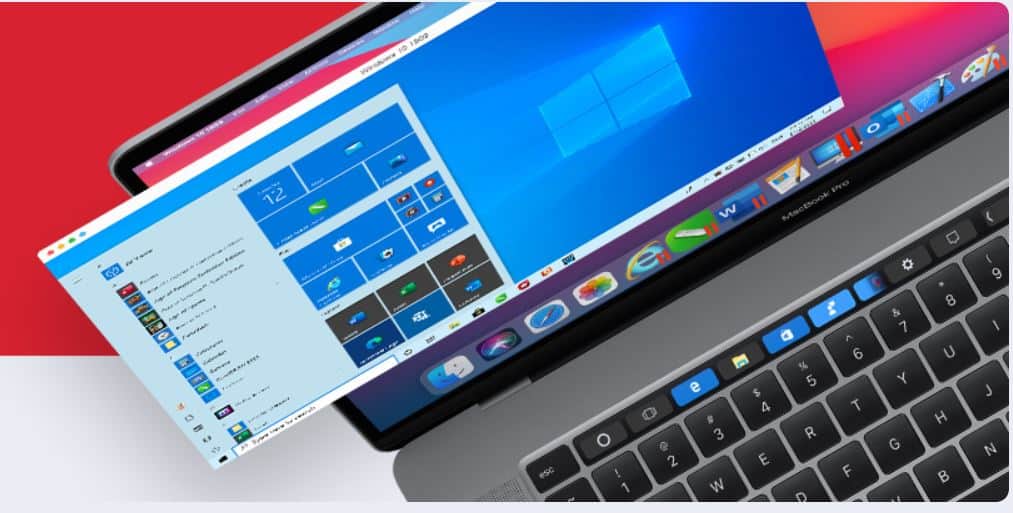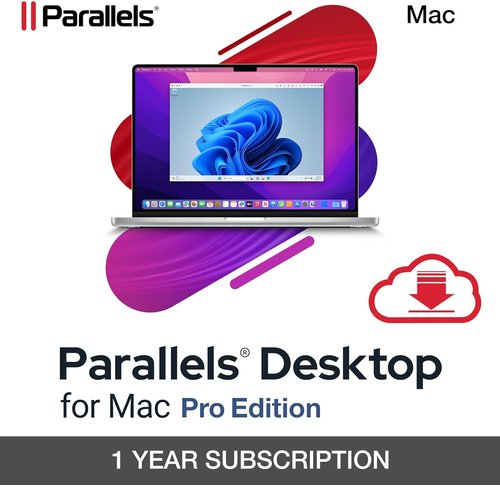Run Parallels Desktop, and in the Mac menu bar click File New. Select Install Windows or another OS option and click Continue. Select Install macOS Big Sur.app and click Continue. Click Continue to accept creating a new file on Mac disk, then click Save. Nov 13, 2020.Older Parallels Desktop versions are not fully optimized and compatible with the new macOS release, Big Sur (11.0). Please check this Knowledgebase Article for known compatibility and resolved issues prior to upgrading to macOS Big Sur. Parallels Desktop 16 for Mac integrates the largest design update of Apple’s desktop operating system since the debut of OS X, bringing increased graphics performance; and a variety of new. Jun 23, 2020 I installed the Big Sur beta on a 2018 Mac Mini (host OS) and found that the 't' and 'y' keys don't work in any Parallels VMs. I noticed that right away on a Windows 10 VM and also found that the keys didn't work on a Linux live boot CD. Creating a custom entry send-key for 't' and 'y' does work - had to do that to enter a password.
Guest blog post from Dmitry Geynisman, Product Manager at Parallels

You may have seen these messages from both macOS and Parallels Desktop for Mac:
No worries, in this blog post I will explain the situation in detail. First, I will give you a relatively short answer about why Parallels® Desktop uses system extensions, and then more details will follow.
- Parallels Desktop uses a hypervisor technology to create a high-performance virtual machine, so you can run Windows, Linux, macOS, and other operating systems inside it.
- There are 2 types of hypervisors on macOS that Parallels can use: Apple’s built-in hypervisor or Parallels’ proprietary hypervisor. Parallels proprietary hypervisor is implemented as a system extension.
- System extensions in macOS enable developers to integrate deep into the macOS system to achieve better performance or provide some unique functionality.
- When Parallels Desktop attempts to load the Parallels hypervisor system extensions, macOS prompts a user to ‘allow’ this. System extensions have elevated privileges and if they are coming from a non-trusted source, can be used maliciously. So, it is a security precaution, similar to how your phone apps ask to access your camera.
If you downloaded Parallels Desktop from parallels.com and the system extension is signed by “Parallels International GmbH”, then you are in good hands.
- Parallels recommends you use Apple’s built-in hypervisor. That way macOS won’t bother you with System Extension approval or the need to reboot. However, if you need to use the Nested Virtualization feature or a specific workload where Parallels hypervisor shows higher performance scores, you may keep using Parallels hypervisor.

- To change a hypervisor type, first, you need to shut down or stop your virtual machine. Note that for this you might need to start or resume the virtual machine and approve Parallels hypervisor system extension.
When your VM is stopped, go to VM configuration > Hardware > CPU & Memory > Advanced Settings > click on the “Hypervisor” dropdown > select “Apple” or “Parallels” respectively.
If you have multiple virtual machines, you may need to change the setting for every one of them.
Now, if you’re not bored yet, I’d love to tell you more about this story.

For more than a decade, Parallels developed its proprietary drivers (aka system extensions) for running Windows and other OSes on top of the macOS. These drivers made Parallels Desktop the best virtualization solution, the fastest, and the most technologically advanced.
At the same time, for several years, Apple has been moving towards making macOS the most secure and reliable desktop OS (and I should say, Apple succeeded in many ways). One of the key aspects is not to let developers intrude on the OS kernel by loading those extensions (aka “kexts”), as those who have access to the kernel can do things at the very heart of your Mac, which may prove quite dangerous. In order to do that, Apple must replace 3rd-party kernel extensions with the native system APIs that ultimately enable the same product features, and that is massive engineering work even for such a big enterprise as Apple.
Since 2017, with the macOS High Sierra 10.13 release, Apple started to block 3rd-party kexts automatically, and users have had to enable them manually since. At that time, we published this blog post that can tell you even more about Parallels Desktop using system extensions.
In March 2020, with the release of macOS Catalina 10.15.4, Apple started to warn users that some of their apps (that use deprecated system extension) would “be incompatible with a future version of macOS” (read: with macOS Big Sur).
At WWDC20, Apple was quoted as saying that “System Extensions improve the reliability and security of macOS, and deprecated kernel extensions will not load by default in macOS Big Sur”. Eventually, to make Parallels Desktop fully compatible with the new macOS Big Sur 11.0, Parallels Engineering has gone through years of engineering work of rebuilding Parallels Desktop and its features using the new macOS system APIs. This extensive and time-intensive development resulted in the all-new Parallels Desktop, explicitly designed to work and integrate with new macOS Big Sur technologies, and at the same time, deliver performance and productivity improvements to benefit Parallels Desktop customers.
This scheme below visually describes the difference between the default Parallels Desktop modes on the corresponding macOS version. The old Parallels Desktop design using Parallels system extensions is shown on the left, and the newly-invented Parallels Desktop 16, using macOS Big Sur APIs, is shown on the right.
For now, our team continues to work on supporting both Parallels and Apple hypervisors and continues collaborating with Apple on implementing the rest of Parallels Hypervisor features to Apple Hypervisor. We recommend using Apple hypervisor, and if you notice any difference between Apple and Parallels hypervisors for your use case, please let us know.
Download a free trial of Parallels Desktop for Mac and try it out yourself.
The system requirements and supported guest operation systems (OSes) for Parallels Desktop 16 for Mac are fully detailed below. We encourage every potential or existing user to explore the requirements prior to downloading or purchasing Parallels® Desktop. Users may be pleasantly surprised at the incredible performance of Windows, Linux, and other popular OSes on their Mac with Parallels Desktop.

Supported Apple Mac hardware configurations:
Check your Mac hardware to ensure you can run Parallels Desktop without experiencing compatibility issues. Our team would love to make sure every user gets the most out of Parallels Desktop and the virtual machines (VMs) they create.
Important Note: Internet connection is required for product activation, updates and select future features.
Supported guest operating systems that can be created as Parallels Desktop virtual machines
Mac with Apple M1 chip
Only ARM versions of operating systems are supported.
- Windows 10 on ARM Insider Preview
Windows on ARM can run most of the regular Windows x86 applications. You can download the Parallels Desktop trial and install the application you need. If it doesn’t work, let us know at Parallels Forum. - Ubuntu 20.10, 20.04
- Fedora Workstation 33-1.2
- Debian GNU/Linux 10.7
- Kali Linux 2021.1
Mac with Intel processors
- Windows 10
- Windows 8.1
- Windows 8
- Windows Server 2019
- Windows Server 2016
- Windows Server 2012 R2
- Windows 7 (SP0-SP1)
- Windows Server 2008 R2 (SP0-SP2)
- Windows Vista Home, Business, Ultimate and Enterprise (SP0-SP2)
- Windows Server 2003 R2 (SP0-SP2)
- Windows XP (SP0-SP3)
- Windows 2000 Professional SP4
- Windows 2000 Server SP4
- Boot2Docker
- Red Hat Enterprise Linux (RHEL) 8, 7 and 6
- CentOS Linux 8, 7 and 6
- Fedora Linux 32, 31, 30 and 29
- Ubuntu 20.04, 19.04, 18.04 LTS and 16.04 LTS
- Debian GNU/Linux 9 and 8
- Debian GNU/Linux 19
- SUSE Linux Enterprise 15
- openSUSE Linux 15.1 and 15
- Linux Mint 20, 19 and 18
- Kali 2019 and 2018
- Elementary OS 5.0
- Manjaro 18
- Mageia 7 and 6
- Gentoo Linux **
- Solaris 11 and 10 **
- openBSD 6 **
- FreeBSD 12 and 11 **
- openVZ 7
- eComStation 2 and 1.2 **
- ReactOS 0.4 **
- Android OS*
- macOS Big Sur 11.0 (when released)
- macOS Catalina 10.15
- macOS Mojave 10.14.x
- macOS High Sierra 10.13.x
- macOS Sierra 10.12.x
- OS X El Capitan 10.11.x
- OS X Yosemite 10.10.x
- OS X Mavericks 10.9.x
- OS X Mountain Lion 10.8.x
- OS X Lion 10.7.x
- OS X Lion Server 10.7.x
- Mac OS X Snow Leopard Server 10.6.x
- Mac OS X Leopard Server 10.5.x
- and many more…***
*Only the version downloaded with the Parallels Desktop Installation Assistant
**Parallels Tools are not available for this operating system
Mac Os Big Sur Parallels Desktop Version
Note: Parallels Desktop emulates PC hardware, so operating systems that are not present in this list can work as well. We encourage users to download a free 14-day trial of Parallels Desktop first to install the OS of your choice. If it doesn’t work and you believe it should be supported, let us know at Parallels Forum.
Parallels Tools for Linux requires X Window System version 1.15-1.20 and Linux Kernel version 2.6.29-5.1.
Moving your PC?
Below are the Windows PC system requirements to move a PC to your Mac and use it as a Parallels Desktop VM (using Parallels Transporter Agent):

- 700 MHz (or higher) x86 or x64 processor (Intel or AMD)
- 256 MB of RAM
- 50 MB of available hard disk space for installation of Parallels Transporter Agent
- Ethernet or WiFi network adapter for migrating over network
- External USB drive for migrating via external disk
- Supported Windows: Windows 10, Windows 8.1, Windows 7, Windows Vista, Windows XP, Windows Server 2003 and Windows 2000*
Parallels Desktop 16.3.2 Cracked For MacOS {Apple M1 + Big Sur}
*To migrate Windows Vista or older, Transporter Agent from Parallels Desktop 13 should be used.
We sincerely hope this resource helps you navigate your experience with Parallels Desktop. Since 2006, Parallels has delivered excellence by being the #1 choice of Mac users to run Windows on Mac without rebooting. Please don’t hesitate to reach out if you need help. The Parallels support team can be contacted on Facebook or Twitter, 24/7.
